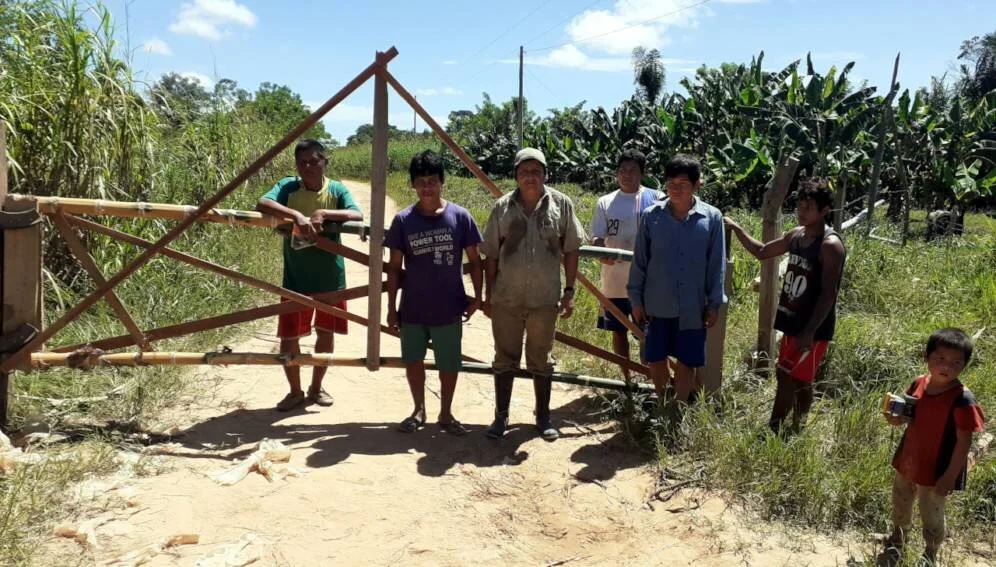According to this Spanish-language article, “a health protocol developed by a team of anthropologists, doctors, and tribal leaders is allowing tsimane indigenous communities settled in the Beni department, north-central Bolivia, to cope with the COVID 19 pandemic. This ethnic group is distributed in more than 100 communities located along rivers and forests in the Bolivian lowlands with a population of approximately 16,000 people. To date, they have no case of the new coronavirus. The spread of COVID19 among indigenous ethnic groups is cause for alarm among specialists, since many peoples would not be immunologically prepared.”
“Although there are no official data” of how many indigeneous people have come down with the virus in Bolivia, “the Observatory of Rights of the Indigenous Peoples of Bolivia confirmed”one death “in the indigenous territory of Lomerío (Santa Cruz) and 17 infected in Macharetí (Chuquisaca)” as of May 29.
“The protocol was prepared as part of the Tsimane Health and Life Cycle Project that has been working in that territory since 2002 by agreement with the Tsimane Grand Council and the Tsimane and Moseten Regional Council. The objective is to carry out research and primary health care and plan and execute prevention responses. The protocol is mainly based on preventing the entry of outsiders into the community, controlling the exit to places of greater risk, the isolation of people suspected of having the disease and communication campaigns in their own language. Although many of these measures are also being applied by other native ethnic groups, some aspects that could be considered unique are special efforts to protect older adults, equipping local health posts with oxygen concentrators and pulse oximeters, or Information on the location of villages and houses for contact tracing”, explained Michael Gurven by email.
The protocol recommends that community members “remain in their territory, that they do not go out to sell their products, such as fish, and we recommend how to disinfect them when they go to urban centers", SciDev.Net refers to Carola Vaca, Director of the Beni Biosphere Reserve and Biological Station, who participated in the first phase of the study.
“The protocol could be adopted by other native peoples adapting it to their particularities. "To be effective, the plans must be collaborative and must involve indigenous populations in the decision process," explains Gurven. “We have made closings of the entrance of roads so that the people of the cities and towns cannot enter the communities and the protocol helps us to make the communities and especially the older people of the community understand”, he comments to SciDev .Net. In a telephone interview, Maguin Gutiérrez Cayuba, Secretary of Health of the Great Tsimane Council. "What the pandemic shows is that indigenous peoples are adapting to this situation, revaluing traditional practices such as barter or the production of organic food and traditional medicine systems," Miguel Vargas Delgado, Director of the Legal Studies and Social Research (CEJIS) of Bolivia.
“He adds that the indigenous organizations themselves have taken measures to protect their health, "in the absence of the support of state institutions" in the face of the pandemic.”
“Alex Villca, Spokesperson for the National Coordinator of Defense of Indigenous Territories Originally from Peasants and Protected Areas of Bolivia, explains to SciDev.Net. in a telephone interview that "due to the dominant extractivist model, indigenous territories are no longer those spaces that in the past allowed self-sufficiency with hunting, fishing and fruit harvesting." "Many believe that being isolated within the jungle we would be self-protected, but it is not considered that we no longer have the resources as when our ancestors faced other viruses and pandemics, so it is important to see the situation of each indigenous people on a case-by-case basis," it states.”
“Collective isolation has been considered the only viable option in the face of epidemics and threats in many different indigenous groups around the world. But making that happen effectively, meeting food and healthcare needs, is not easy, says Gurven.”
“There are no miracle solutions, but we wanted others to see what we have done. Tribal leaders and all other stakeholders should meet as soon as possible to come up with the best plan possible given the local situation, ”he concludes. For his part, Vargas affirms that the diversity of indigenous peoples shows that the discussion of protocols is possible as long as they take into account the social, cultural and in particular health characteristics, which vary from one village to another. Homogenization should be avoided. According to Vargas, the protocols offer an immediate response by indigenous peoples to the pandemic but do not guarantee their survival. Added to this is the concern that the country's official health information system does not record cases by ethnic variable, which does not allow us to know the number of infected indigenous people. "It is urgent to have information disaggregated by ethnic self-identification," concludes Vargas.”
The protocol is described in more detail in an article published in the Lancet.

